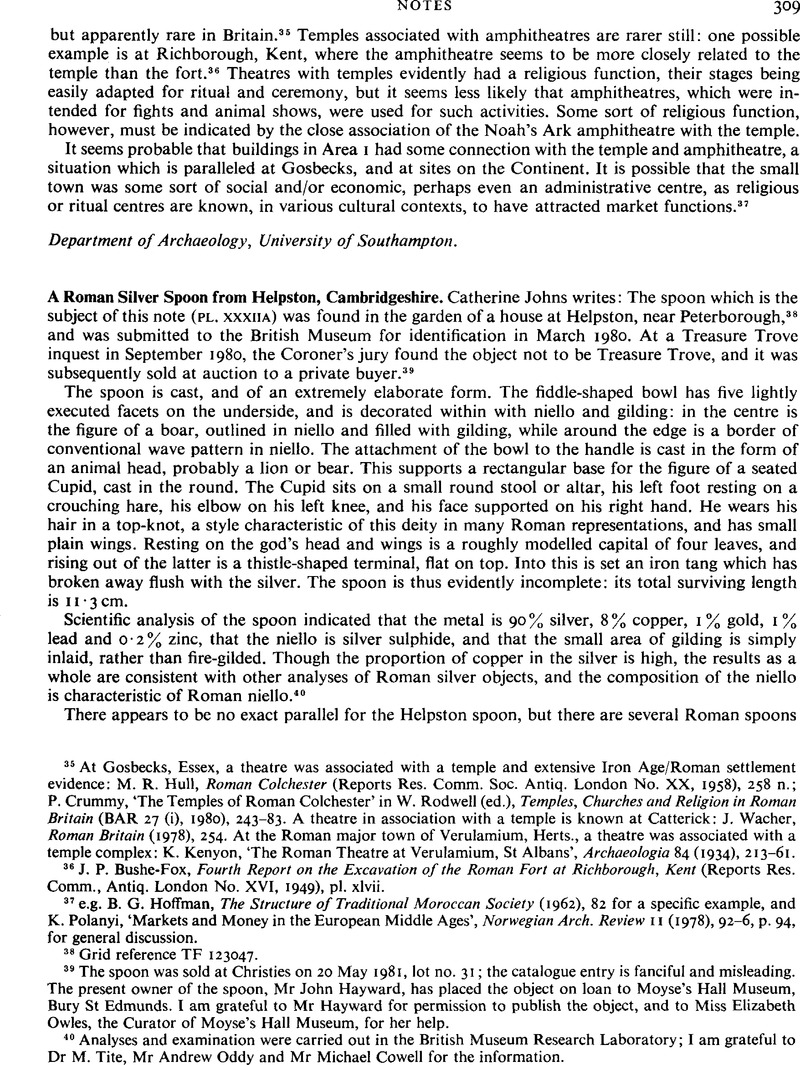Published online by Cambridge University Press: 09 November 2011

38 Grid reference TF 123047.
39 The spoon was sold at Christies on 20 May 1981, lot no. 31; the catalogue entry is fanciful and misleading. The present owner of the spoon, Mr John Hayward, has placed the object on loan to Moyse's Hall Museum, Bury St Edmunds. I am grateful to Mr Hayward for permission to publish the object, and to Miss Elizabeth Owles, the Curator of Moyse's Hall Museum, for her help.
40 Analyses and examination were carried out in the British Museum Research Laboratory; I am grateful to Dr M. Tite, Mr Andrew Oddy and Mr Michael Cowell for the information.
41 Donald Strong, Greek and Roman Gold and Silver Plate (1966), 177-8.
42 Seine-Inf. Comm. des Antiqu. Bull, vii, 352. For this and other references, and for helpful discussions about the spoon, I should like to record my thanks to Dr David Sherlock.
43 Germania 28 (1927), 39-40, Abb. 3.
44 Information from David Sherlock.
45 Majewski, K., Importy Rzymskie W Polsce (Warsaw, 1960), 142Google Scholar, no. 105, pl. xxx.
46 I am very grateful to Mr Donald Bailey for information about this spoon, which is on display in the museum, but is unnumbered and unlabelled.
47 Germania 28 (1927), 39: ‘das äusserste Ende fehlt und bestand nach Analogie ähnliche Stücke (z.B. im Altertumsmuseum Mainz) wahrscheinlich aus Knochen.’